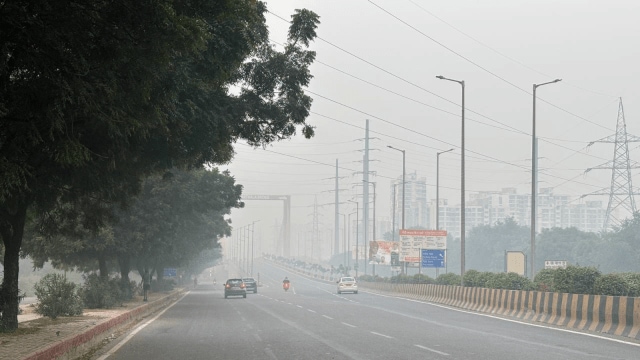Stay updated with the latest - Click here to follow us on Instagram
2 days after Diwali, Delhi continues to inhale ‘very poor’ air
This is the second consecutive day of deteriorating air quality in Delhi, after the national capital celebrated Diwali.
 Going by EWS's forecast, AQI might shoot up anywhere between 320 and 360 today. (File Photo)
Going by EWS's forecast, AQI might shoot up anywhere between 320 and 360 today. (File Photo)Residents in Delhi once again woke up to thick smog on Wednesday morning, with an AQI of 345 on October 22 at 5.30 am, falling in the ‘very poor’ category according to the Central Pollution Control Board (CPCB). This is the second consecutive day of deteriorating air quality in Delhi, after the national capital celebrated Diwali.
Parts of Delhi recorded an AQI of 380 at 6.15 am, including Ashok Vihar, Bawana and Dilshad Garden. Majority of the national capital recorded an AQI between 300 to 400, in the ‘very poor’ category, while areas like DTU, IGI Airport and Lodhi Road recorded an AQI of less than 300, in the ‘poor’ category.
On Tuesday, October 21, many areas in Delhi recorded an AQI above 500 as NCR residents flouted the firecracker rules issued by the Supreme Court ahead of the festival. The 24-hour average air quality index (AQI) at 4 pm on Tuesday was 351 (very poor), up from 345 on Monday.
The air quality in Delhi has been an issue of concern every year due to stubble burning in neighbouring states, especially during the season of low wind speeds, leading to thick smog during the months of December and January.
Delhi found itself enveloped in a thick grey haze and its air quality entered the “red zone” a day after Diwali, which saw cracker-bursting well beyond the two-hour limit (8 pm to 10 pm) set by the Supreme Court.
More than 250 people suffered burn injuries in Delhi on Diwali, with hospitals across the city reporting a surge in the number of cases, mostly caused by firecrackers. The Safdarjung Hospital, which has the country’s largest burn unit, recorded the highest number of such cases at 129.
The DFS received 269 emergency calls on Diwali night, marking a nearly-15-per cent decline from last year’s figure of 318, the highest in the last 13 years.







